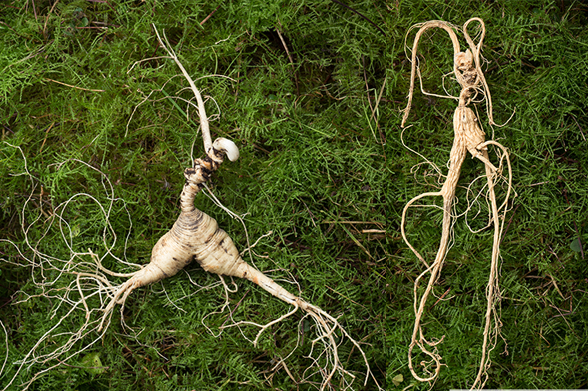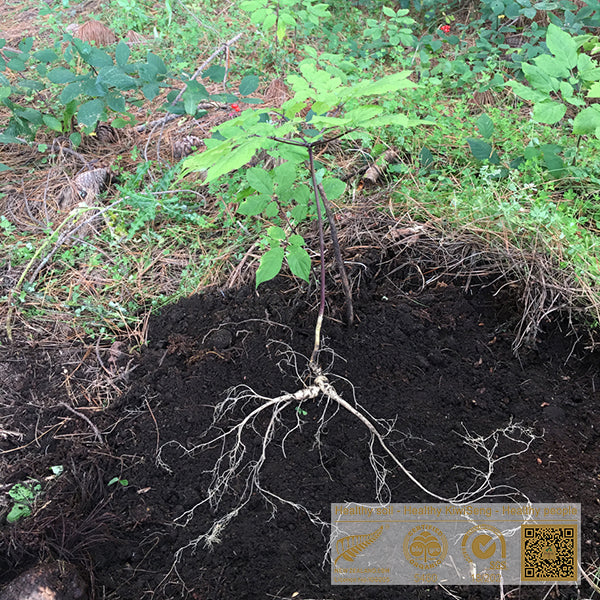
If you set out to win a prize for creating the healthiest possible tea, black ginseng leaves would be the first thing you'd throw in the pot.
Although most people associate ginseng with the root. The leaves of the ginseng plant also contain the active ingredients - ginsenosides. These bioactive components of ginseng have health-promoting effects. This includes anti-ageing, anti-stress, antioxidant, anti-fatigue, anti-diabetes, anticancer, improved immune system and enhanced sexual function.
Black ginseng root is made from white or red ginseng by steaming and drying the root several times. This process causes changes in the active ginsenosides. Black and red ginseng are more valuable for health and medicinal use than white ginseng.
A study published in June 2020 by researchers from Massey University and Alpha Nutraceuticals aimed to find out if the content of unique ginsenosides in ginseng leaves can be changed by steaming. They followed the same process used to make black ginseng root.
After nine cycles of steaming the fresh green leaves changed into their black form. The black ginseng leaves had a 3 to 13-fold increase in some ginsenoside compounds compared with fresh ginseng leaf. Some ginsenosides only became detectable after several rounds of steaming.
As the number of steaming cycles increases, these ginsenosides change by having fewer sugar units. The anticancer activities of ginsenosides are inversely proportional to the number of sugar units in the molecule. Previous studies have shown that the compounds in black ginseng root have promising anticancer activities against a wide array of cancer types. These same anticancer compounds were found in black ginseng leaves.
The ginseng leaves were sourced from KiwiSeng. The plants were grown under pine tree forest at high altitude in New Zealand’s Central North Island. Since KiwiSeng’s ginseng is grown organically, there were no pesticide or fungicide residues in the leaves. These residues can accumulate to high levels in farmed ginseng – which may account for why leaves are rarely used for human consumption.
The leaves of ginseng are a secondary income source for growers. Unlike roots, which is harvested once, ginseng leaves can be picked annually.
This original research is available online:https://www.mdpi.com/1420-3049/25/12/2809





Leave a comment
This site is protected by hCaptcha and the hCaptcha Privacy Policy and Terms of Service apply.